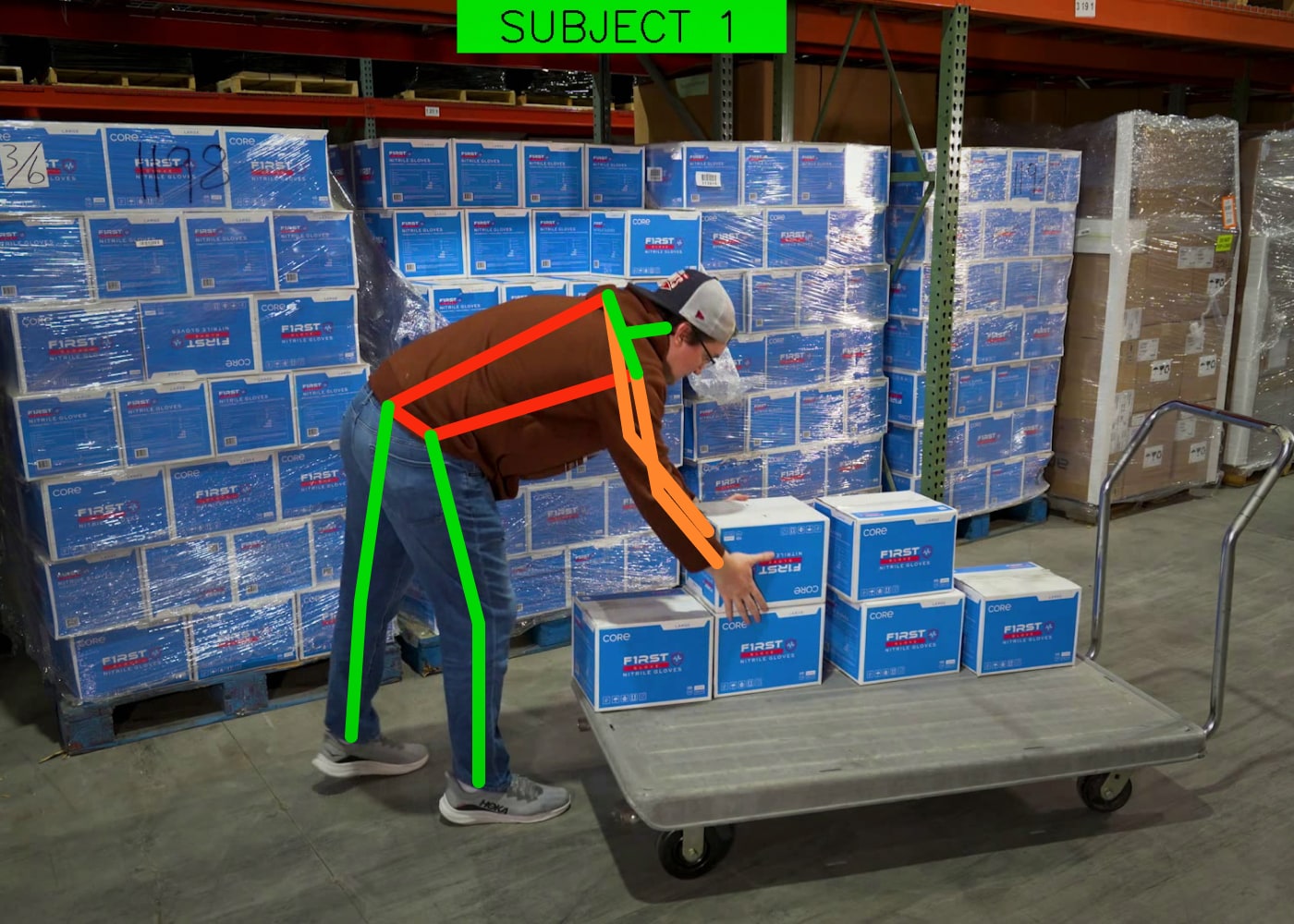
.png)
Key Takeaway:
Training is more effective when workers can see what needs to change. Real-time visual feedback connects movement to risk, helping workers adjust on the spot. This makes training faster, more relevant, and more likely to prevent injuries.
Most ergonomic safety programs still rely on scheduled classroom sessions or e-learning. Even well-designed courses fail when the content doesn’t match the physical tasks workers perform. A lifting safety module won’t stick if it’s delivered weeks before the task, or if the posture examples don’t reflect the load sizes, work heights, or environmental constraints in the facility.
Another issue is Learning Management Systems (LMS) fatigue. Safety teams regularly push content updates, but few are tailored to task-specific risks. Workers begin to tune it out, especially if they don’t see clear connections between training and real injury prevention.
The result? Most training becomes background noise. That disconnect is exactly what visual feedback helps solve, by tying training directly to the moment of action.
When a worker sees their own motion captured and analyzed, the lesson becomes specific and hard to ignore.
Let’s say a warehouse associate lifts boxes from a pallet to a cart. A generic instruction like “bend at the knees, not the waist” might make sense in theory. But when that same worker watches a video of themselves showing their spine flexing at 60 degrees under load, paired with a real-time RULA score, the risk becomes obvious. The coaching becomes personal.
Visual feedback helps build proprioception, awareness of body position during movement. This is critical in fast-paced environments, where workers are focused on task completion, not posture. By layering digital skeleton overlays on top of the footage, workers can quickly spot things like:
These visual cues drive faster corrections than verbal reminders ever could. Workers don’t just need to know what “good” looks like, they need to see how they measure up to it, and how to improve in real time. To understand how this works in practice, let’s walk through a few examples across different types of work.
Visual feedback links movement to measurable risk, then guides quick correction. Here’s how it plays out:
On a busy bottling line, a worker loads cases onto stacked pallets. Using TuMeke, the safety team captures a short video that highlights deep trunk flexion and one-sided twisting. The skeleton overlay shows unsafe angles alongside a high REBA score. Seeing the risks, the worker pivots the feet and realigns the pallet, cutting strain on the lower back. The feedback turns numbers into action.

In a fulfillment zone, barcode scanning often means reaching overhead. A short TuMeke video flags shoulder elevation beyond 90 degrees, shown in red on a skeleton overlay. Seeing the strain makes workers more likely to act, like re-zoning shelves to keep high-turn items within easy reach. The change reduces fatigue and improves flow.
Office workers often miss out on ergonomic checks. Using the TuMeke Office Ergonomics app, a new hire records their setup. The system flags unsupported arms, forward head tilt, or a low monitor. With instant visuals, they raise the monitor, adjust the chair, and submit a follow-up video. Setup becomes hands-on learning instead of trial and error.
Workers fix issues faster when they can see them. Visuals build ownership, speed up corrections, and turn training into lasting habits. But to scale this kind of feedback across teams and sites, companies need more than isolated examples. That’s where TuMeke’s platform comes in.
Traditional ergonomic assessments often require in-person experts, physical markers, or wearables. TuMeke removes those barriers. With only a smartphone, any team can capture and assess movement in seconds.
Every video generates a clear, color-coded risk score that highlights exactly where strain is building. The real breakthrough comes from TuMeke’s AI engine that helps generate recommendations. It not only flags issues, it explains the risks and recommends practical fixes workers can apply immediately.
Supervisors gain oversight through the Risk Suite platform, where they can review tasks across sites, track trends, and target the highest-priority risks. Workers benefit too, with the ability to revisit their own assessments, compare progress over time, and learn through visual cues instead of static checklists.
The result: faster corrections, safer teams, and stronger performance. Start your free trial today and see how TuMeke can cut injuries, boost productivity, and put safety training where it belongs, on the floor, not in the classroom.
For every 100 assessments performed, WWT saved approximately 83 hours, translating to a 42% decrease in ergonomic-related injuries across the organization within eight months. This efficiency was crucial for WWT, allowing him to complete 12 times more assessments than before.
What is visual feedback in ergonomics?
Visual feedback shows a worker how their body is moving during a task, using tools like video, motion overlays, or live posture scoring. It helps make invisible risks easy to spot and correct.
How is real-time video better than classroom training?
It connects the lesson to the actual task. Workers don’t have to imagine what “bad posture” looks like, they see it in themselves and fix it right away.
Does TuMeke require sensors or wearables?
No. TuMeke uses computer vision through a standard phone or webcam. It generates ergonomic scores and posture overlays without needing physical devices.
What ergonomic tools does TuMeke support?
TuMeke uses RULA, REBA, the Revised NIOSH Lifting Equation, Revised Strain Index, and Liberty Mutual Material Handling Equations to score risk. These are validated tools used across safety and ergonomics programs.
How often should visual assessments be done?
We recommend capturing key tasks during onboarding, after task changes, when discomfort reports arise, or proactively across your organization to uncover hidden risks. Frequent short assessments work better than long sessions once a year.